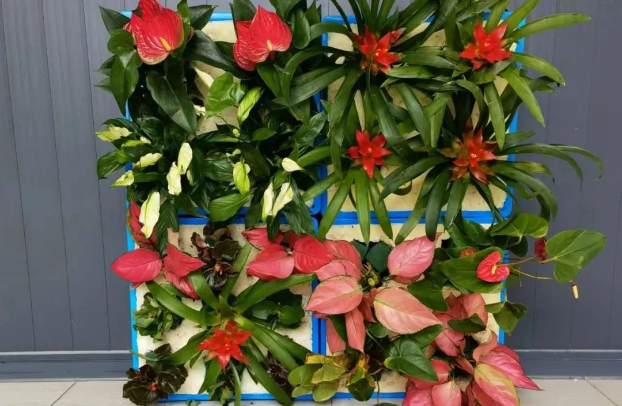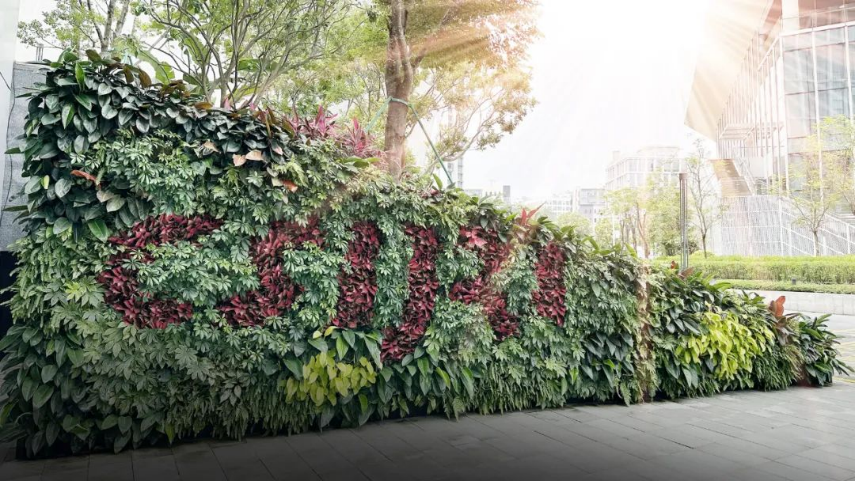In recent years, the rapid growth of the economy and urbanization also bring various environmental problems, including the greenhouse effect, air pollution, and wastewater pollution. Urban three-dimensional greening has become trendy in city planning to address these challenges and achieve harmony between humans and nature. Green wall systems can enhance the urban ecological environment and promote social green transformation. In this issue's Exclusive Interview, we are pleased to have Associate Professor Huang Weimin from the School of Mechanical and Aerospace Engineering at NTU Singapore. He will share insights on tackling technical challenges in implementing urban three-dimensional greening.

Associate Prof Huang Weimin
As a faculty member at the School of Mechanical and Aerospace Engineering at NTU Singapore, Prof Huang Weimin's research centres on transforming new materials into practical products. With over 25 years of expertise in polymer and metal materials, he has published 200 journal articles and two monographs with more than 40 patents from China and the United States. He has led numerous projects for Singapore's Ministry of Defence, Ministry of Education, Ministry of Science and Technology, and BMW Corporation.
Q:
As arable land decreases and the demand for urban greening continues to grow, soilless cultivation technology is becoming widely used in agriculture, greening, and other industries. What motivates you to research green wall systems?
A:
Green wall systems are a greening method that allows plants to grow on non-horizontal surfaces under various conditions. They are the core technology for developing the three-dimensional greening industry. Green walls can beautify urban landscapes, reduce the heat island effect and noise, improve the urban environment, provide thermal insulation, save energy, and alleviate urban water and drainage pressure. The benefits of three-dimensional greening are significant. Currently, they are widely used in cities such as Shanghai, Shenzhen, Wuhan, Guangzhou, and Hangzhou. I believe this industry has a promising future.
Q
Green walls have strict requirements for cultivating soil. We know your team has developed a new type of soil sponge. How does it differ from existing sponge materials on the market?
A
Many cultivation sponges on the market consist of polyurethane foam, and people use charcoal cotton for three-dimensional greening. However, it presents notable drawbacks, such as significant changes in volume and strength before and after water absorption, resulting in swelling, weakened strength, root rot, and challenges in plant survival. In response, our team has developed this new type of soil sponges. From the outset, our focus has centred on cost-effectiveness while ensuring optimal water retention and breathability of the sponge. Leveraging patented technology, we've achieved an optimal balance in water absorption, softness, hardness, strength, and toughness to meet diverse requirements. They offer better performance at a more competitive price.


Q
The newly developed soil sponges challenge the notion that plants rely solely on soil for survival. Are these sponges only suitable for use in green walls?
A
In addition to their use in green walls, these soil sponges can replace soil in potted flowers and bonsai and serve as the base for green turf. Compared to traditional soil cultivation methods, they circumvent issues like soil loss and hardening while offering a longer service life. They are lighter in weight and cohesive as a whole. Plants grown using soil sponges have lower environmental requirements and are easier to transplant. With proper care, they can even thrive in desert areas. Moreover, they're suitable for agriculture, such as seedling cultivation. Their lightweight, reduced susceptibility to insect pests, simple operation, and easy management make them ideal for modern agriculture.

Q
We understand that your project team works hand in hand with Singapore Consis Engineering in developing three-dimensional greening. Could you elaborate on the characteristics of this cooperation model?
A
In the early stages, our project team collaborated with Singapore Consis Engineering to establish our research goals and address critical technical issues in green wall systems. We have completed trial tests in Singapore and are progressing towards commercialization using CSIJRI as an international innovation platform. We have entered the stage of product development and small-batch production. Furthermore, the establishment of Consis Engineering's Guangzhou branch aims to promote our products in domestic and overseas markets.


